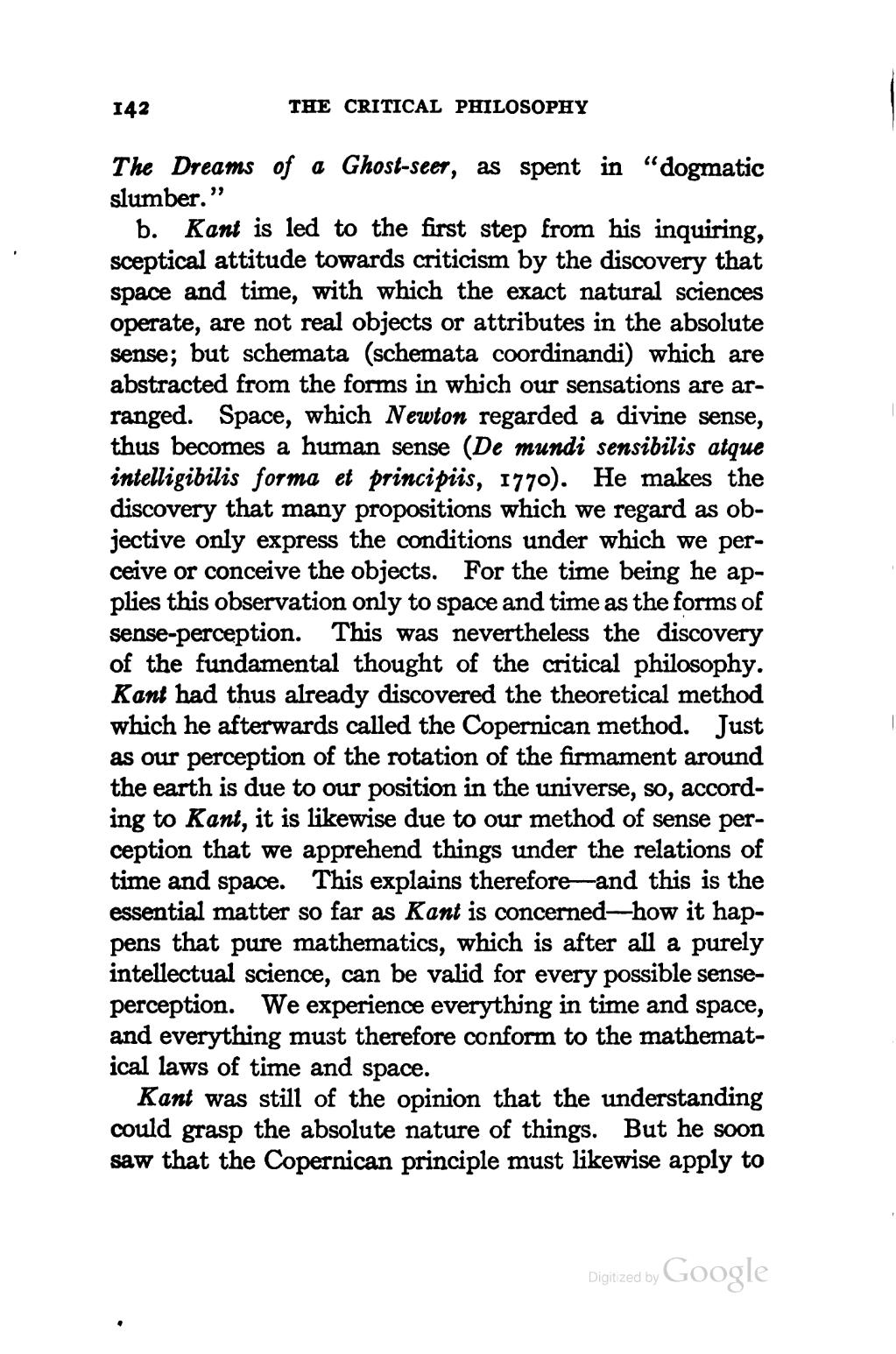The Dreams of a Ghost-seer, as spent in "dogmatic slumber."
b. Kant is led to the first step from his inquiring, sceptical attitude towards criticism by the discovery that space and time, with which the exact natural sciences operate, are not real objects or attributes in the absolute sense; but schemata (schemata coordinandi) which are abstracted from the forms in which our sensations are arranged. Space, which Newton regarded a divine sense, thus becomes a human sense (De mundi sensibilis atque intelligibilis forma et principiis, 1770). He makes the discovery that many propositions which we regard as objective only express the conditions under which we perceive or conceive the objects. For the time being he applies this observation only to space and time as the forms of sense-perception. This was nevertheless the discovery of the fundamental thought of the critical philosophy. Kant had thus already discovered the theoretical method which he afterwards called the Copernican method. Just as our perception of the rotation of the firmament around the earth is due to our position in the universe, so, according to Kant, it is likewise due to our method of sense perception that we apprehend things under the relations of time and space. This explains therefore—and this is the essential matter so far as Kant is concerned—how it happens that pure mathematics, which is after all a purely intellectual science, can be valid for every possible sense-perception. We experience everything in time and space, and everything must therefore conform to the mathematical laws of time and space.
Kant was still of the opinion that the understanding could grasp the absolute nature of things. But he soon saw that the Copernican principle must likewise apply to

